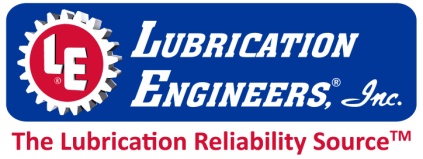I've been surfing the site searching but haven't found it yet. What do the numbers mean in oil weights? I.E. 0W-20, 10W-30, 20W-50 etc? And why are some so close, like 0W-8? Seems like that's really close and not much different than a straight single weight?
You are using an out of date browser. It may not display this or other websites correctly.
You should upgrade or use an alternative browser.
You should upgrade or use an alternative browser.
What do the numbers mean?
- Thread starter LDB
- Start date
Here is some reading for you.


Putting the Simple Back into Viscosity - Bob is the Oil Guy
by John Sander, VP Technology, Lubrication Engineers Inc. Abstract: Simply stated, viscosity is defined as the internal resistance of a fluid to flow. That doesn’t sound too difficult, does it? Unfortunately, new temperature, speed and pressure demands on lubricating fluids have changed over the...
bobistheoilguy.com
The first thing to understand in a multi-weight viscosity like 5W-30 is that the "5W" and the "30" represent two separate viscosiy patameters.
The "W" (stands for Winter) is only defining the cold cranking and pumpability viscosity grades. The "30" in this case is defining the hot viscosity at 100C (212F) which is basically the operating oil temperature in typical engines.
SAE J300 defines engine oil grades.

The "W" (stands for Winter) is only defining the cold cranking and pumpability viscosity grades. The "30" in this case is defining the hot viscosity at 100C (212F) which is basically the operating oil temperature in typical engines.
SAE J300 defines engine oil grades.
The lower the "W" number, the better the oil is for very cold winter cranking, starting and oil pumpability throughout the engine.And why are some so close, like 0W-8? Seems like that's really close and not much different than a straight single weight?
The 2nd number has become lower and lower over time due to CAFE ever increasing fuel mileage targets. The lower the 2nd number is, the lower the hot viscosity, which helps reduce the friction of the oil shearing between moving parts - that is suppose to help increase fuel mileage in the manufacturer's fleet of vehicles that CAFE is eyeballing. Also, as the 2nd number decreases, so does the thickness of the oil film between moving parts which is the main factor in lubrication that helps prevent rubbing and wear.
Anyway, an oil formulator can make anything from 0W-8 to 25W-60 and about anything in between those extremes.
Last edited:
LDB
Thread starter
So the lower the second number the less oil protection at high/normal operating temperatures? Seems like one might want to go with a bit higher number even if it does drop mpg by a tenth or two? In the 1960's and 1970's my dad used Castrol GTX 20W-50 saying for Houston where it very rarely dropped below freezing and then only a bit but it was TOO HOT in summer that was a better choice. With the new information given, and my slight comprehension thereof, seems like that might still be the best protection solution just not the best mpg solution? My filler cap calls for 0W-20. I don't think I want to jump to 20W-50 but with Houston's crazy heat might 10W-30 be better overall?
And thank you to all for sharing knowledge and helping me learn more about this.
And thank you to all for sharing knowledge and helping me learn more about this.
They're millions of vehicles that run 0w20 or less and so far as I know the junk yards aren't loaded with vehicles with blown engines. I personally run 0w20 in Louisiana without any problems. Oh temp today is forecasted over 101 degrees.
I live in central VA, and our temps can get into the upper 90s during the summer. I ran 0W-20 in my last car up until the transmission died at 324k miles. No signs of any issues with the oiling system or piston rings. Fuel efficiency barely dropped, and the engine oil consumption didn't go up by any significant amount (8oz of oil burned/consumed in 10,000 miles oil change intervals, usually less.) I run 0W-20 in my current car and my wife's car as well.
On your way to "thicky land".So the lower the second number the less oil protection at high/normal operating temperatures?
Similar threads
- Replies
- 39
- Views
- 4K
- Replies
- 33
- Views
- 2K
- Replies
- 9
- Views
- 1K
- Replies
- 6
- Views
- 2K

